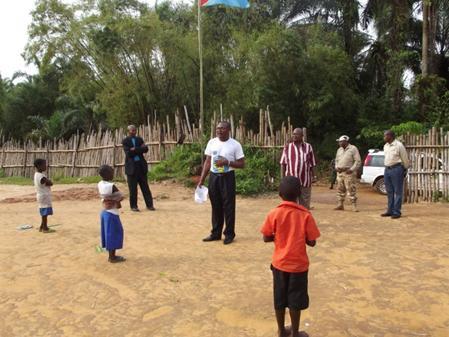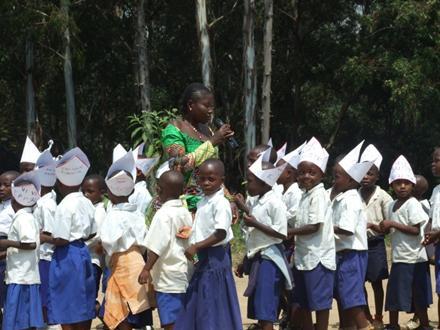Prince Kaleme
Other projects
15 Jul 2013
Bat Conservation in the Mount Hoyo Forest Reserve, Eastern Democratic Republic of Congo
19 Mar 2015
Bat Conservation in the Mount Hoyo Forest Reserve, Eastern Democratic Republic of Congo
4 Nov 2016
Using Bats for the Conservation of Mount Hoyo Forest Reserve, Eastern Democratic Republic of Congo
27 Jun 2019
Protection of Caves, Forests and Roost Sites of Bat in the North Eastern Democratic Republic of Congo
In Eastern Democratic Republic of Congo, this project will assess small mammal diversity across different habitats, elevations and seasons, and then set up wildlife clubs and community conservation efforts to sustain conservation activities.

School children displaying a scene on why and how to conserve wildlife.
Kahuzi-Biega National Park (KBNP) is a protected area, recognized as world heritage and hotspot in term of global biodiversity conservation. Several surveys in the past (Shaller, 1963; Godall, 1977; Mankoto et al., 1992, 1994; Yamagiwa, 1990 - now; Hall et al, 1992, 1998; Hart & hall, 1996;) have indicated a high level of species richness and endemism and outstanding features for maintenance of ecological and evolutionary processes; but most of these studies were focused on gorillas and large mammals that have a direct impact on tourism.

School children during a conservation day playing games and reciting poems on wildlife.
However, it is under severe pressure due to recent war and turmoil. The aim of this project is to assess small mammal species diversity across different type of forests, elevations and seasons. Establishment of wildlife clubs, community conservation program (stakeholders) and the settlement of research on global biodiversity (especially small mammals, forgotten since 1970) are required to sustain conservation activities.
Activities of the project will be:
a) Research: small mammal diversity, biogeography, elevational zonation and ecology.
b) Environment education: talk with stakeholders, set up wildlife clubs and collaboration with local communities to provide advice to reduce poaching in the park (through workshops